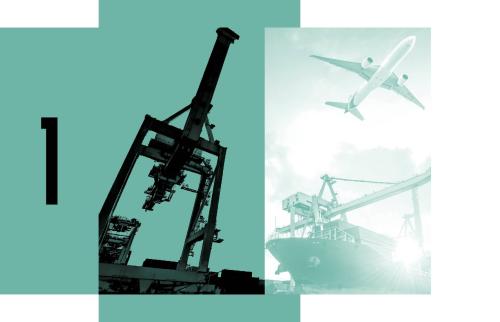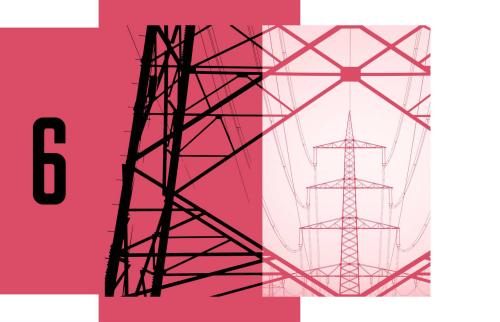This chapter is part of USMCA Forward 2024.
Apart from a special mechanism for labor complaints (addressed elsewhere in this document) the USMCA contains three main kinds of dispute settlement mechanisms, all of them inherited from the NAFTA. State-to-state dispute settlement (Chapter 31) allows an USMCA member state to invoke the jurisdiction of an ad hoc arbitral panel to adjudicate its claim that another member state has violated a provision of the NAFTA. Binational panel review of antidumping and countervailing duty determinations replaces domestic judicial review of agency actions with review by a binational panel that applies, however, the administrative law of the country whose agency has made the determination. Finally, there is investor-state dispute settlement (ISDS), with International Centre for Settlement of Investment Disputes (ICSID) or New York Convention rules applicable. Under NAFTA, state-to-state dispute settlement was minimally used, largely because the state, which a claim was brought against, managed to block the formation of a panel. Technical changes in the USMCA should tighten up the process and preclude such blocking behavior. The binational panel review process in USMCA is unchanged from the NAFTA. ISDS has been greatly limited relative to NAFTA and is now only available between the U.S. and Mexico, and on narrow grounds (e.g., direct expropriation)— except in cases where there is a state contract in a few specific sectors such as oil and gas.
State-to-state dispute settlement
The NAFTA provided for state-to-state dispute settlement by panels appointed by the disputing parties from rosters agreed by all three NAFTA state parties. Panel rulings were binding, with the possibility that a winning claimant could withdraw trade concessions should the losing/disputing party not implement the panel ruling. However, as VanDuzer notes, a key weakness of the NAFTA state-to-state dispute settlement process was that, simply by refusing to appoint panelists, a party could block indefinitely the establishment of a panel.1 After 1998, when the U.S. blocked a panel that Mexico was seeking in the Sugar dispute, the NAFTA state-to-state process was unused. At the same time, this and other disputes between NAFTA parties ended up in WTO dispute settlement,2 in one instance at least (Tuna/Dolphin) where a choice of forum clause in the NAFTA would have arguably required the parties to use the NAFTA process.
As Lester, Manak, and Arpas explain, the NAFTA did in fact have a formal mechanism to prevent a disputing party from indefinitely blocking a panel by failing to appoint panelists. This mechanism allowed for selection by lot of citizens of the other disputing party as panelists. But this mechanism depended on a roster, which was agreed by all three NAFTA states parties from which the selection by lot would be made.3 While panelists who were not on the roster could in principle be appointed, these nominations would always be subject to a right of veto (preemptory challenge) by the other disputing party. As Lester, Manak, and Arpas further elucidate, for much of the period the NAFTA was in force, there was apparently a lack of a full roster agreed by all three parties.
In the USMCA context, a serious effort has been made to address the panel blockage problem through provisions in the Protocol of Amendment to the USMCA (2019) that provide for the contingency of lack of consensus on a roster. Thus, Article 7.1 of the Protocol states: “The Parties shall establish, by the date of entry into force of this Agreement, and maintain a roster of up to 30 individuals who are willing to serve as panelists. Each Party shall designate up to 10 individuals. The Parties shall endeavor to achieve consensus on the appointments. If the Parties are unable to achieve consensus by one month after the date of entry into force of this Agreement, the roster shall be comprised of the designated individuals.”4
In any event, it appears that in fact an agreed full roster is now in place.5 In contrast with the NAFTA experience, in the four years since the USMCA state-to-state dispute system has been operating, four disputes have already been fully decided by panels.5
The consensus on the roster and the expeditious repeated use of the panel process suggest a real commitment by state parties to state-to-state dispute settlement under the USMCA. It is worth asking to what extent this commitment is driven by uncertainty about the future of the dispute settlement system at the WTO. In this regard, could the U.S., by participating fully in the USMCA state-to-state dispute settlement arrangements, be sending a message that whatever its obstructive moves in the WTO, the Biden administration is not opposed to independent and impartial legal dispute settlement in international trade, especially where the states parties collectively have control over the identity of the adjudicators and where there is not appellate review?
Investor-state dispute settlement
The NAFTA ISDS procedures represented the model found typically in Bilateral Investment Treaties (BITs) of the 1980s and 1990s. The NAFTA gave investors or investments of another NAFTA party the ability to sue a host state NAFTA party under the International Centre for the Settlement of Investment Disputes (ICSID) or the United Nations Commission on International Trade Law (UNCITRAL) for violation of a range of protections such as fair and equitable treatment, national treatment, and expropriation without full market value compensation. If successful, the investor could enforce a monetary award against the host state in ordinary courts around the world.
By the time of the USMCA, critiques of ISDS as an unduly limited policy space had become widespread, along with other concerns about the secrecy of the procedures in most cases, lack of adequate conflict of interest rules for arbitrators, and the continued absence of precedent and consistency in decisions. Robert Lighthizer, the United States Trade Representative in the Trump administration, was strongly opposed to ISDS—so were many prominent progressives in the U.S. Congress, Elizabeth Warren leading the charge. As for Canada, Chrystia Freeland, the prominent politician and former trade minister who led the negotiations for Canada had already implicitly accepted many of the criticisms of ISDS in replacing conventional ISDS arbitration in the Canada European Union Trade Agreement (CETA) with an investment court system (ICS). The EU had devised this system as a response to ISDS critiques, replacing ad hoc arbitrators with a standing roster of judges and including appellate review, which would ensure consistency and certainty in the jurisprudence.
For the Trump administration, replacing ISDS with an ICS model was a non-starter. Already in the WTO, Lighthizer was seeking to undermine the “judicialization” reflected in the Appellate Body. Mexico, for its part, was mainly concerned with maintaining ISDS as a credible commitment to U.S. investors in its petroleum sector primarily, where normally—in addition to the NAFTA’s treaty-based investor protections—Mexican state authorities entered into contracts with these investors providing a contractual guarantee of some measure of regulatory stabilization.
The resulting solution in the USMCA final text reflects an attempt to reflect and reconcile these various perspectives. Its main aspects are:
- Termination of investor-state dispute settlement between Canada and the U.S. and Canada and Mexico.
- A special ISDS regime for American or Mexican investors in any of five specified sectors of the economy where the investor is a party to a “covered” government contract.
- A greatly restricted ISDS regime for other investors. ISDS under this restricted regime does not apply with respect to those norms most closely associated with the risk of regulatory chill, namely liability for indirect expropriation (regulatory takings) or for violation of fair and equitable treatment (often interpreted to protect investors’ expectations of regulatory stability). Moreover there is a time-limited exhaustion of local remedies requirement—transparency and conflict of interest requirements that respond to criticisms of ISDS procedures.
- Finally, the transitional provisions of the USMCA allow for legacy claims under the NAFTA where: 1) the investment was made when NAFTA was in force and 2) continued to exist at the time of the entry into force of the USMCA. Around a dozen legacy claims have been filed. The most notorious and potentially acrimonious is a claim by Canadian companies against the United States, arising out of the Keystone XL pipeline saga.
But for the demands of Mexican officials during the USMCA negotiations, ISDS might have been excluded entirely from the agreements. The negotiations spanned a transition between administrations in Mexico, and the position taken seems more than anything else like an attempt to preserve the status quo ante particularly for U.S. oil and gas investments in Mexico. Since then, the re-nationalization effort of the new administration in the hydrocarbons sector raises issues of whether these commitments are durable, and whether Mexico will want to continue with ISDS. Another consideration is that Canada and Mexico are parties to the Comprehensive Progressive Pacific Partnership (CPTPP) where ISDS is available. Finally, it is unclear why investors across the Canada-U.S. border would need ISDS since both countries have judicial systems in which investors of the other country can pursue claims, and which are accessible and non-discriminatory. Under the NAFTA, ISDS, more than any other aspect, raised sensitive issues related to political sovereignty and became a principal focus of attacks on the agreement by activists. While activists may be disappointed that USMCA does not address the climate change challenge for example, the considerable restriction of ISDS (combined with a strong labor regime) is likely to make it much less of a target for progressives, and also sovereigntist elements on the populist right than was the case with NAFTA.
Binational panel review of domestic agency trade remedy determinations
Chapter 10 of the USMCA essentially duplicates the NAFTA Chapter 19 procedure of binational panel review of domestic agency determinations on trade remedies. This procedure allows for an alternative to domestic judicial review of such determinations, on the theory that binational panels will be more objective and less subject to protectionist sentiment that courts reviewing their own agencies’ trade remedy determinations. The applicable law is that of the agency rendering the determination, and similarly, the standard of review is drawn from that NAFTA party’s domestic administrative and constitutional law. The members of binational panels are wherever possible to be retired or sitting judges. There is an Extraordinary Challenge mechanism, which serves as an appellate instance, with appeal grounds including misapplication of the appropriate domestic law standard of review. Binational panel review had been widely criticized in U.S. trade law and policy circles, based primarily on the notion that in cases that Canada brought under Chapter 19 of NAFTA, binational panelists were insensitive to or ignorant of the proper standard of review applied under U.S. administrative law. While the Trump administration was seeking the elimination of binational panel review,6 successive Canadian governments, including the current one, had developed a narrative that this mechanism was a key to the benefits Canada received by being part of NAFTA, and its continuation in the USMCA was presented by Canada as non-negotiable.
A comprehensive study of the use of the NAFTA binational panel review mechanism by Canada throughout the existence of the NAFTA suggests that, despite the official narrative in Canada and complaints from the U.S. trade remedies bar, Canadian interests actually gained little: “Chapter 19’s binational review panels did not achieve Canada’s sought-after exemption from the application of domestic trade remedy laws…Chapter 19 has also proven incapable of resolving major trade disputes such as softwood lumber. After protracted litigation and repeated obstruction by U.S. trade authorities of panel decisions that favored Canadian exporters, Canada’s government and forest industry still felt compelled to agree to a negotiated settlement. Over the last quarter-century, Canadian exporters have succeeded in getting trade relief in 12 cases. While seven of these cases were clean wins attributable to the Chapter 19 process, the last of these occurred nearly 15 years ago. In the five other cases, Canadian exporters won interim relief from the panel decisions, but the trade disputes were ultimately resolved independently of the Chapter 19 panel process…”7 Given these realities, and also in light of the fact that criticisms of the binational review mechanism were largely confined to Washington insiders (unlike ISDS where objections had broader public and political salience), it is not hard to understand that the Trump administration was not in fact here making a major concession in dropping its demand to eliminate binational panel review.
Conclusion
The improvements to state-to-state dispute settlement in USMCA and the expeditious processing of multiple disputes since it came into force have understandably led to some amount of optimism from commentators who believe in the importance of rule of law in international trade, at least relative to the uncertainty that hovers over the future of the WTO dispute system. But there remain limits to the extent to which dispute settlement can be an effective means to rules compliance, upon which economic factors such as business can depend. Long running trade disputes between, for example, the U.S. and Canada—such as on softwood lumber or Canada’s dairy quotas—have been resistant to resolution despite multiple dispute proceedings under the Canada-U.S. FTA, then the NAFTA, and now USMCA—and also in the WTO. These kinds of disputes engage complex commercial and governmental interests on both sides of the border, are subject to intense lobbying and lawyering, and on the governmental side may involve multiple actors including sub-national governments and domestic administrative agencies and courts. Over a year ago, a USMCA state-to-state panel ruled against the United States in a dispute concerning auto rules of origin (ROOs). This was a key, heavily bargained component of the USMCA and was of importance to all three USMCA parties, especially the U.S. and Mexico. There is still no resolution in the form of compliance with the panel report, although apparently there are ongoing discussions between the USMCA parties. There are real costs to uncertainty here, as the key controversy affects the structure of supply chains, namely whether the value of inputs from non-USMCA countries used in the production of core auto parts within a USMCA country must be taken into account in determining the extent to which the core part counts as USMCA-originating for purposes of ROOs.
In the case of Mexico’s new economic nationalism, the Biden administration has been cautious in pressing dispute settlement despite some initial moves in that direction. The U.S.- Mexico relationship has many dimensions (e.g., control of the border, drug policy, etc.), and there are reasons to avoid an overly confrontational stance on trade and investment issues. For this reason, despite the newfound optimism about state-to-state dispute settlement under USMCA, politics and the risks that go with it will likely remain very much entangled in high-stakes trade disputes. This is likely only to be reinforced by the increasing linkage of trade with security and geopolitical concerns generally—and especially within the vision of key U.S. officials.
Related viewpoints


More from USMCA Forward 2024








-
Footnotes
- VanDuzer, J. Anthony, State-to-state Dispute Settlement under the USMCA: Better than NAFTA? (April 9, 2020). Festchrift in Honour of Professor Stephen T. Zamora (Houston: Arte Publico, submitted, 2019, Forthcoming)., Available at SSRN: https://ssrn.com/abstract=3341662.
- See Marc L. Busch, “Overlapping Institutions, Forum Shopping and Dispute Settlement in International Trade” (2007) International Organization 735-761.
- Simon Lester, Inu Manak and Andrej Arpas, “Access to Trade Justice: Fixing NAFTA’s Flawed State-to-State Dispute Settlement Process,”18:1 World Trade Review (2019, 63-79, p. 67.
- The Rules of Procedure (17.1) provide a complex set of mechanisms to overcome various delay and blocking tactics: “1. If a Party has failed to designate its individuals to the roster under Article 31.8 (Roster and Qualifications of Panelists) and this impedes the composition of a panel pursuant to Article 31.9 (Panel Composition) due to an insufficient number of individuals on the roster, the disputing Parties shall apply the following process to compose a panel: (a) If the chair is being selected under this process, within five days of the request for establishment of the panel, each disputing Party shall propose two candidates who shall not be a citizen of either disputing Party. (b) If the disputing Parties are unable to decide on the chair within 15 days of the request for the establishment of the panel, the chair shall be selected by lot within five days, from the candidates proposed pursuant to subparagraph (a) who are not citizens of either disputing Party. (c) If the responding Party refuses to participate in or fails to appear for the choosing by lot procedure under subparagraph (b), the complaining Party shall select an individual to serve as chair from the candidates proposed pursuant to subparagraph (a) who is not a citizen of that Party. The complaining Party shall notify the responding Party of the selection no later than the next working day. (d) If the panelists other than the chair are being selected under this process, no later than five days after the selection of the chair, each disputing Party shall propose: (i) in the case of a five-member panel, four candidates, at least two of which shall not be citizens of that disputing Party; or (ii) in the case who is a citizen of the other disputing Party from the candidates proposed pursuant to subparagraph (d). (g) If a disputing Party fails to select its panelists under subparagraph (f), within five days the panelist or panelists shall be selected by lot from the candidates proposed pursuant to subparagraph (d) who are citizens of the other disputing Party of a three-member panel, two candidates, at least one of which shall not be a citizen of that disputing Party, and each disputing Party shall notify the other Party of its proposed candidates no later than the next working day. (e) If the responding Party fails to propose all of its candidates pursuant to subparagraph (d), the proposed candidates will be those proposed by the complaining Party. (f) If one or more panelists other than the chair are being selected under this process, then within 15 days of selection of the chair, each disputing Party shall select: (i) in the case of a five-member panel, two panelists who are citizens of the other disputing Party from the candidates proposed pursuant to subparagraph (d); or (ii) in the case of a three-member panel, one panelist If the disputing Party who failed to select its panelists under subparagraph (f) refuses to participate in or fails to appear for the choosing by lot procedure, within five days the other disputing Party shall select: (i) in the case ,of a five-member panel, two panelists of its own citizenship from the candidates proposed pursuant to subparagraph (d); or (ii) in the case of a three-member panel, one panelist of its own citizenship from the candidates proposed pursuant to subparagraph (d), and the disputing Party that selects shall notify the disputing Party who refused to or failed to appear for the choosing by lot procedure of the selection no later than the next working day.
- “USMCA Chapter 31 Panel Reports,” WorldTradeLaw.Net.
- United States Trade Representative, “Summary of Objectives for the NAFTA Renegotiation,” July 17, 2017. Available at https://ustr.gov/sites/default/files/files/Press/Releases/NAFTAObjectives.pdf
- Scott Sinclair, Saving NAFTA Chapter 19: Was it worth it? Canadian Center for Policy Alternatives, 2018, p. 19.
The Brookings Institution is committed to quality, independence, and impact.
We are supported by a diverse array of funders. In line with our values and policies, each Brookings publication represents the sole views of its author(s).





